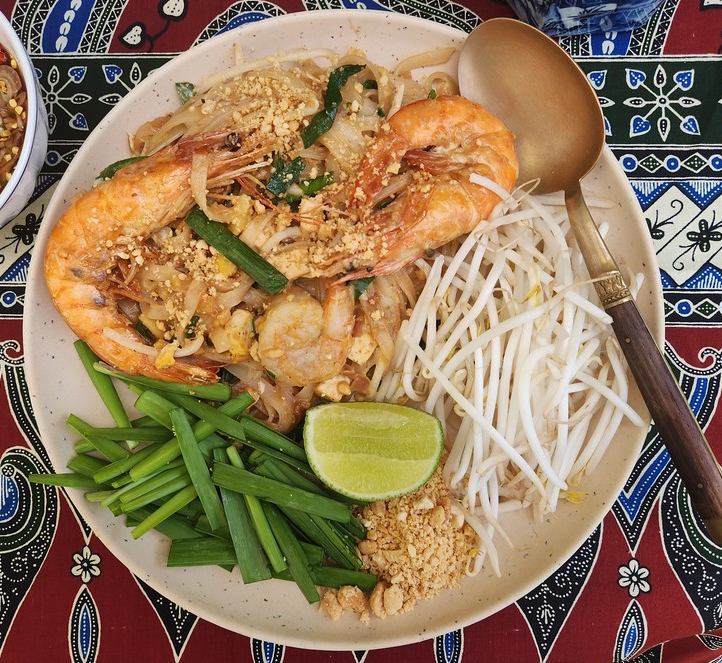
It would be difficult to find a dish that tastes so delicious and yet is so easy to prepare as Tex-mex Fajita! The dish is thought to originate from Tejano chefs whose families emigrated to the United States from the Northern states of Mexico. "Tejano" is Spanish for "Texas".
As mentioned in the summary above, Tex-Mex food is cuisine which has its origins in Texas by ranch workers who emigrated from northern Mexico. The name fajita is derived from the Spanish word faja which means strip, belt or girdle (referring to how the beef or chicken is cut). Fajitas are a rather new creation, dating to the 1930's or 40's. The first mention of Fajita is in print was in 1971 (Oxford English Dictionary). The original (and some believe the only authentic) fajitas are made with strips of seared beef (notably skirt steak, but nowadays chicken is popular too. Fajitas contain many ingredients that are indicative of Tex-Mex cooking: flour tortilla, cumin and often cheddar cheese. Fajitas differ from burritos mostly because of their fillings (although fajitas often use smaller tortilla and are assembled by the diner). Burritos often (there are lots of variations) contain ground beef and beans, while Fajitas used grilled strips of marinated meat, bell peppers, onions and cheese.
Much of what most Americans and in many parts of the non-Latino world consider to be Mexican food is actually Tex-Mex. RThe major difference between Tex-Mex and food found in Mexico is mostly determined by ingredients used because ranch workers used what ingredients were available to them, but some dishes are rather unique to Tex-Mex. The term "Tex-Mex" first came into use in the 1940's. Ingredients much more likely to be found in Tex-Mex than Mexican food include: ground beef, yellow cheese (like cheddar), wheat flour, black beans, canned tomatoes and cumin. But one must always be careful when employing broad generalities to describe Mexican food because Mexico is a big country and there are many regional culinary variations. The spice cumin, often found in Tex-Mex food, originates in South Asia and was adopted in the US much earlier than in Mexico. Many, if not most, Tex-Mex dishes use cumin liberally. So too, outside of tortas, it is much more likely that Tex-Mex dishes use wheat flour tortillas rather than corn. Some popular Tex-Mex dishes (which are commonly served in Mexican restaurants here) include: Nachos, Chile Con Carne (ground beef, cumin and canned tomatoes), Fajitas, the ubiquitous Burrito and its deep fried cousin Chimichanga.
Interestingly enough, hard-shelled tacos—considered by many as the epitome of Americanized Mexican food—are not, in fact, Tex-Mex. Hard-shelled tacos have a long but uncertain history, there are competing claims to their origin, some dating back to the 19th century. However, in 1947, Juvencio Maldonado, a New York restaurant owner from Oaxaca obtained the patent on the shell-making device. The original drawing for the patent can be seen here. But hard-shelled tacos didn't really catch fire until Glen Bell in San Bernadino, California opened Taco Tia in the mid-1950's. Shortly thereafter he re-branded as Taco Bell. For many Americans who live in states with few Latino residents, Taco Bell might be the closest they get to Mexican food. Bell didn't invent the hard shell taco—he reversed engineered the tacos he ate at nearby Mitla Cafe—but there is no doubt he popularized them. There are now more than 6,000 Taco Bell's in 26 different countries. Perhaps not surprisingly, Mexico is not one of those countries, as repeated attempts to open Taco Bells in Mexico have failed spectacularly.
While historically fajitas are made with beef, we have a slight preference for chicken. Some make them with shrimp. Otherwise, the marinade and recipe is the same. It's your choice. Fajitas taste best if you grill the meats, onions and bell peppers, but you can approximate this with a cast iron skillet. We actually used a Korean barbecue grill as the juices can run off and you can get a good sear! We make our own simple salsa with canned tomatoes, canned jalapenos, onions and lots of garlic. Some might prefer fresh ingredients to canned, but the taste and texture will be different. Normally we prefer fresh ingredients for just about everything we cook—this is an exception. There are some good commercials salsas, but most are not to our liking. Also we like to top the tortillas will cheese and heat them so the cheese melts, definitely not "traditional" but mighty tasty! This is a dish that permits lots of leeway; it's hard to get it wrong.
Ingredients:
Primary:
- 2 pounds chicken breasts fillets sliced into thin strips
- 1 red bell pepper sliced into thin strips
- 1 green bell pepper sliced into thin strips
- 1 medium onion sliced into thin strips
- A sufficient number of flour tortillas
Marinade:
- 2 Tablespoons Extra-virgin Olive Oil
- 2 Teaspoons ground cumin
- 1 Tablespoon smoked paprika
- 1 Teaspoon crushed garlic (more if you like!)
- 1 Tablespoon lemon or lime juice (we prefer the latter)
- 1 Teaspoon salt
- Chili pepper (to taste)
Toppings:
- Salsa of your choice
- Sliced avocado or guacamole
- Sour cream or crema
- Sliced black olives
- Chopped cilantro (essential!)
- Shredded lettuce
- Lime(s) cut into 1/8ths
- Cheese of your choice (medium Cheddar, Colby, Jack, Manchego, Queso Asadero . . .)
Preparation:
The most common way to eat fajitas is to serve the cooked ingredients in a dish placed on the table. The other ingredients can be placed in small individual serving dishes. Each family member or guest can assemble their own fajita using the toppings of their choice.
- Mix the chicken with the marinade ingredients, cover and chill in the refrigerator for 1 - 4 hours.
- When the marinade is finished in the fridge, slice the peppers and onions.
- Grill or fry the chicken and vegetables until done. If using a fry pan, fry the chicken first, then set aside and then fry the peppers and onions. Ideally the peppers should be slightly scorched.
- Mix the chicken, peppers and onions together and set aside.
- Clean the fry pan and then place it on a medium high heat (no oil necessary).
- Place a tortilla in the pan, top with a handful of cheese and wait until the cheese melts before moving to a plate for serving. (Note, a trick I use is to preheat the cheese-topped tortilla in the microwave until the cheese starts to melt and then finish by transferring to the hot skillet. This fully melts the cheese without the tortilla becoming soggy (which happens if you only use the microwave) or too crispy on the bottom if you use the skillet alone.
- Festoon with the toppings of your choice, roll and enjoy!
Recipe by T. Johnston-O'Neill
Photo by Shari K. Johnston-O'Neill









